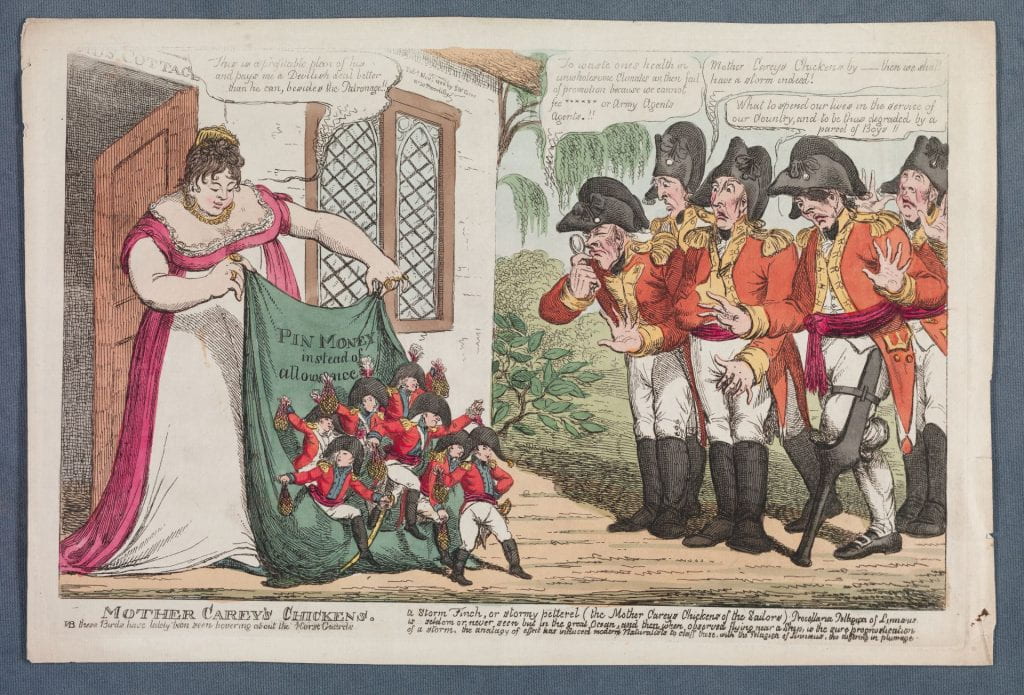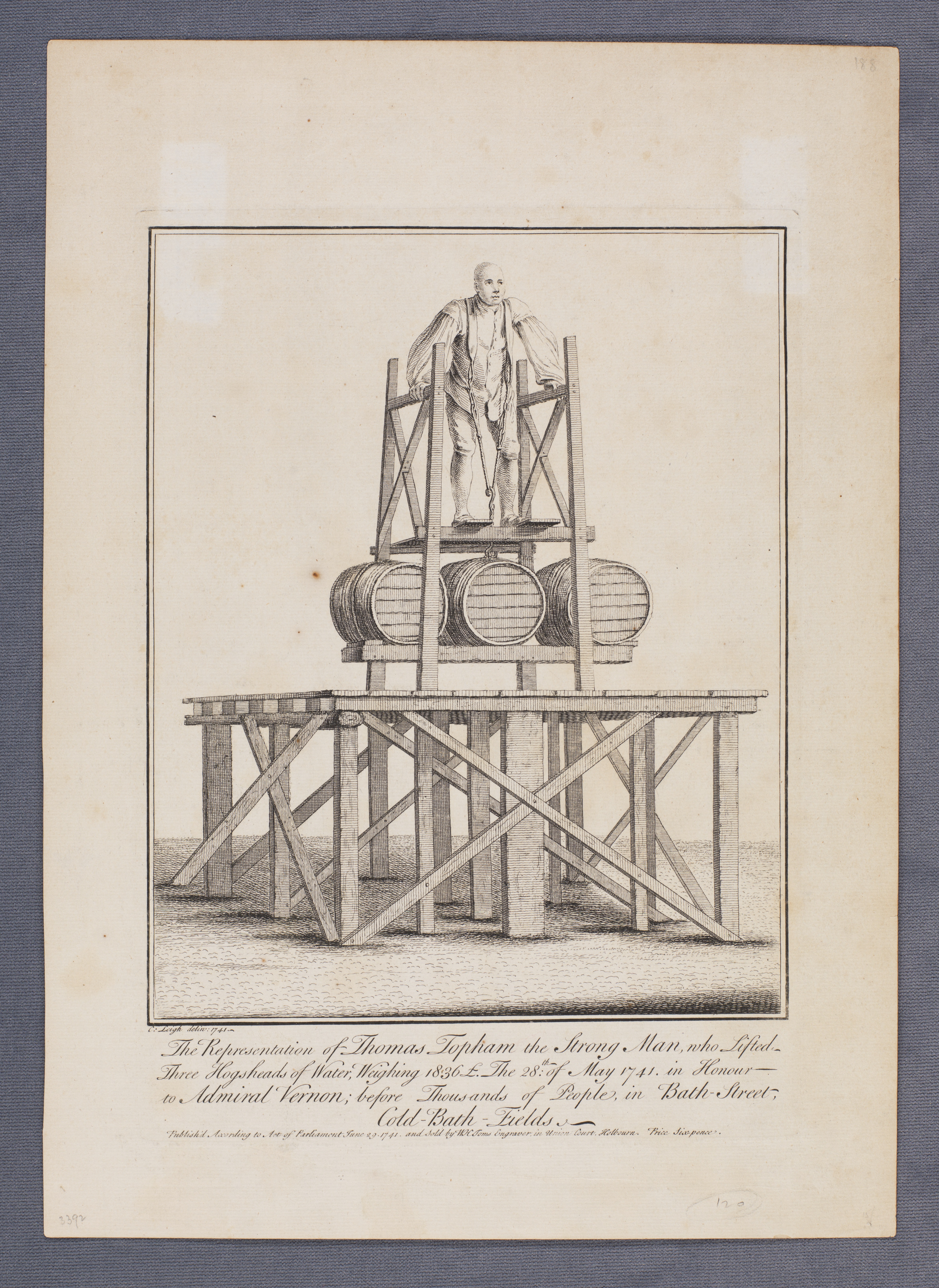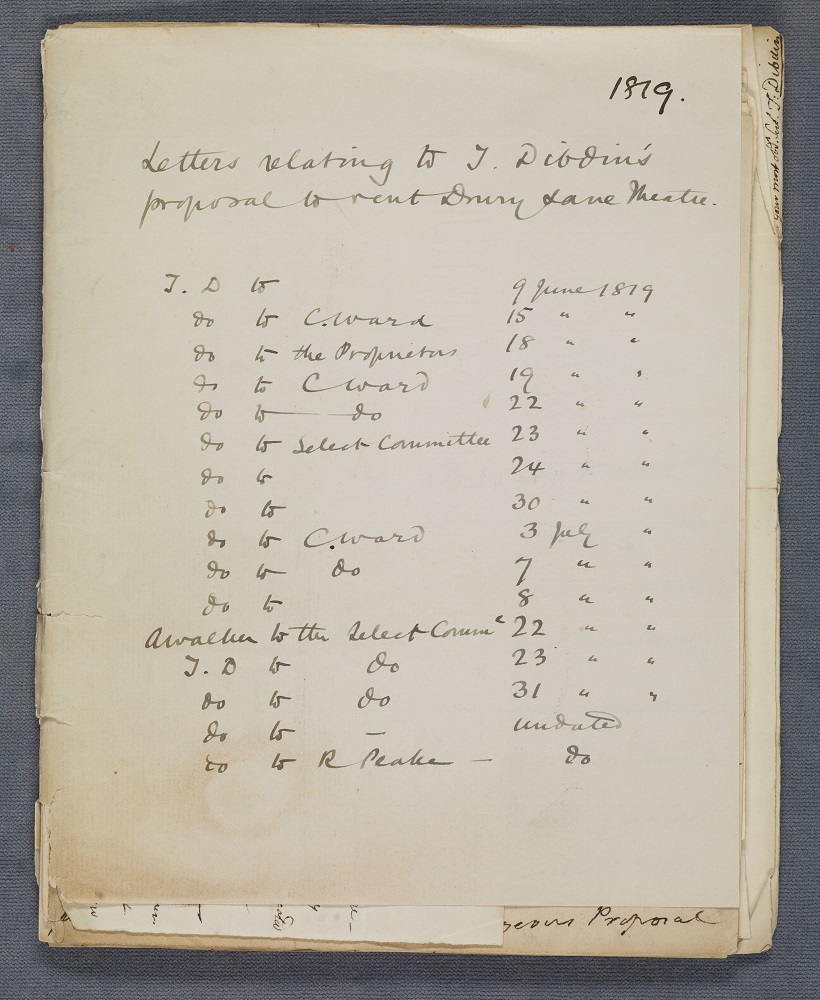“A stout and comely lady stands at the door of an ornamentally rustic cottage, shaking a cloth from which tiny officers leap out, holding money-bags. The cloth is inscribed in large letters ‘Pin Money instead of Allowance’. She says: “This is a profitable Plan of his and pays me a Devilish deal better than he can, besides the Patronage!!” Five elderly officers of normal size (right) watch their pigmy rivals with consternation. One looks through his glass, saying, “To waste ones health in unwholesome Climates an then fail of promotion because we cannot fee ****** or Army Agents Agents.!!” Another says: “Mother Careys Chickens by – then we shall have a storm indeed!” A third exclaims: “What to spend our lives in the service of our Country, and to be thus degraded by a parcel of Boys!!” He has a wooden leg and a patch over one eye. Another had lost his right arm, and the group seem hardly fit for active service. The ‘boys’ wear fashionable crescent-shaped cocked hats with plumes, the others old-fashioned hats with cockade, loop, and button. Over the door is inscribed in large letters ‘… mus Cottage’. It has the ornamental Gothic windows with leaded panes and thatched roof of fashionable rusticity. Beside it is a weeping willow. Below the title: ‘NB these Birds have lately been seen hovering about the Horse Guards’. Below the design: ‘a Storm Finch, or stormy petterel (the Mother Careys Chickens of the Sailors). Procellaria Pelagica of Linnœus. is seldom or never seen but in the great Ocean, and then when observed flying near a Ship, is the sure prognostication of a Storm, the analagy [sic] of effect has induced modern Naturalists to class these, with the Pelagica of Linnœus, tho differing in plumage’.”–British Museum online catalogue.
- Printmaker: Williams, Charles, active 1797-1830, printmaker.
- Title: Mother Carey’s chickens [graphic].
- Publication: [London] : Pubd. Novr. 1808 by S.W. Fores, No. 50 Piccadilly, [November 1808]
808.11.00.01+
Acquired June 2020



![[John Bull roasted] [John Bull roasted]. Detailed description below.](https://lewiswalpole.files.wordpress.com/2019/06/lwlpr37313.jpg)


![[Album of etchings by the Ingram sisters] alt = Album of etchings. Detailed description below.”](https://lewiswalpole.files.wordpress.com/2019/05/lwlacq000487.jpg)



